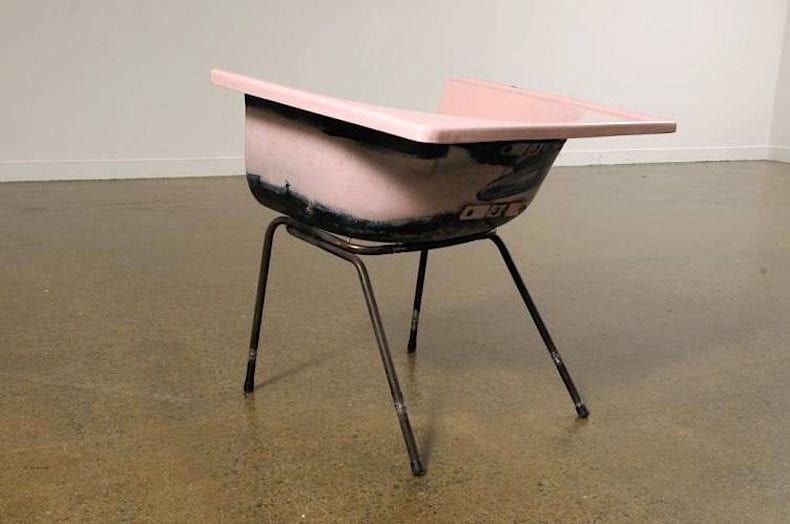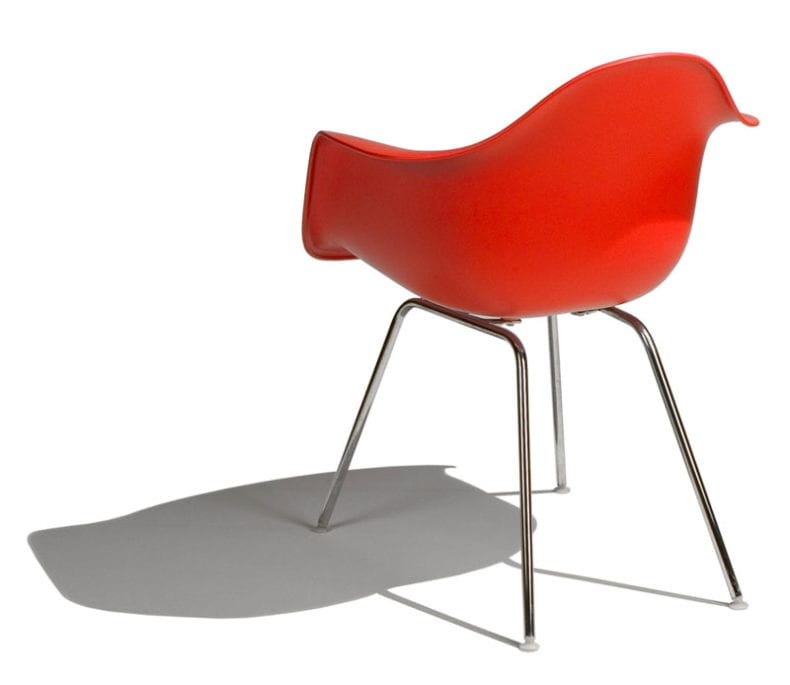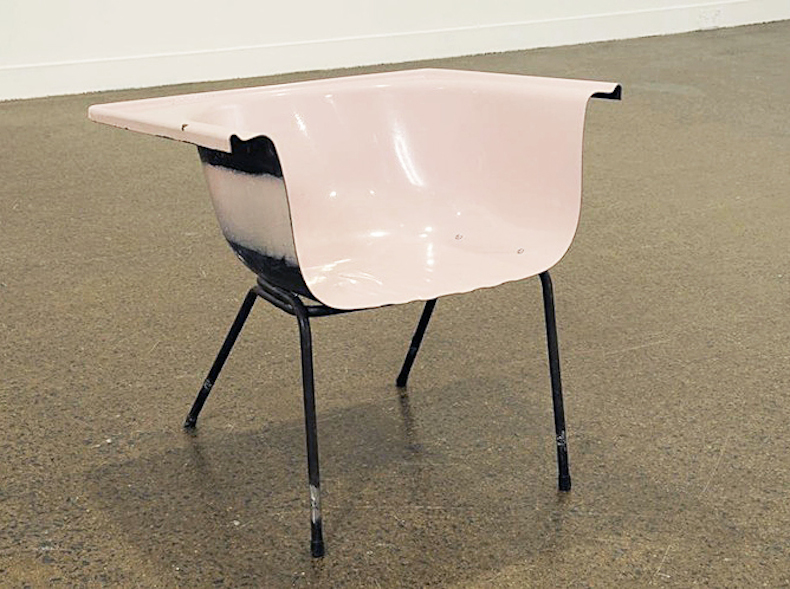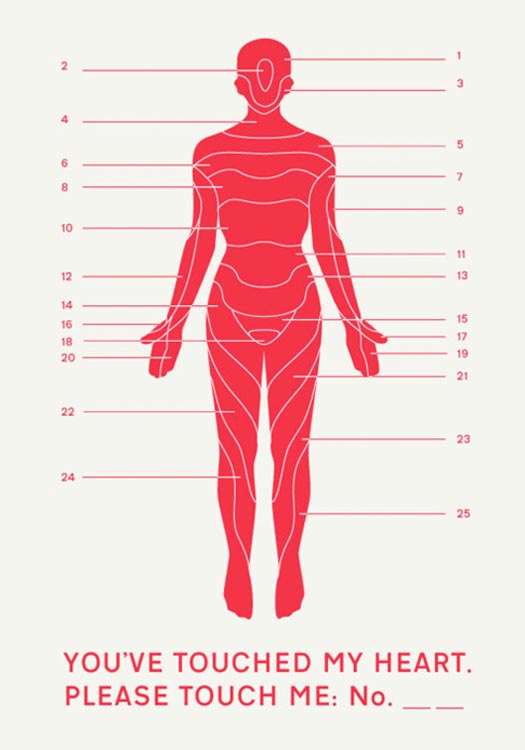We were instantly smitten with this chair made of a sawed-in-half bathtub that looks like the strange cousin to Eames’ iconic molded plastic arm-chair and wondered who made it. It is the creation of artist Stuart Ringholt who, in the throws of hashish psychosis, wondered if art can be practical. He then went on to create a kind of conceptual art of self-healing and improvement that involved doing embarrassing things, and holding Anger and nude Laughter Workshops that have challenged some curiously-rigid art world norms.
When asked how his art is practical this was his answer:
I don’t know if it is but I am interested in finding out. I am interested in finding out whether art can be super practical beyond the immediate visual and sensory experience…Can art literally improve my life on an interpersonal level? Surprisingly I discovered it can.

…

We love Rineholt’s strangely compelling question, and especially his answer.
The more we read about him, the more interesting we find him. Although we haven’t found an image of it, we can imagine Rineholt’s This Painting Improved My Life, 2004. Carolyn Christov-Bakargiev of Artforum describes it (and other of his work):
The artist has quietly (and disquietingly) been exhibiting a white monochrome painting mounted on a table. There is color hidden from view under the picture plane; even Ringholt does not know the underpainting’s hue). On the back of the work, This Painting Improved My Life, 2004, Ringholt marks the date every time he looks at the canvas.
“When I look at the white rectangle with a hidden color,” he says, “1 am reminded that 1 don’t know everything. 1 am reminded not to fight for my opinion, which is important, because my mind then becomes quieter. The dates on the back provide the history of a quieting mind.”
… Ringholt is a paradox: Nothing he does seems legitimate as art, let alone arguable as important art, and yet he claims it as art, and positions it with tremendous assurance. In a world of fragility, disempowerment, and fear, Ringholt-a fool-finds a way for us to claim and reclaim territory for the self, and he makes this his practice. Much of what Ringholt does might seem childish or foolish, and irrelevant to contemporary art, but his apparent naïveté in fact forces a reevaluation of what we consider appropriate.
Artist on a very personal path to self-healing.




